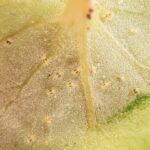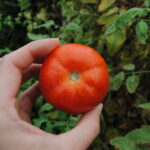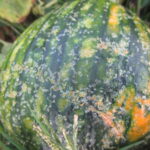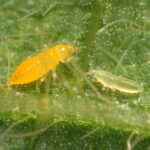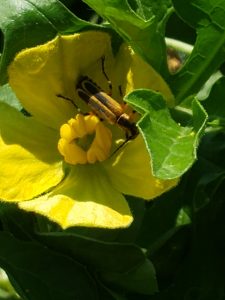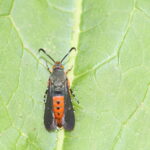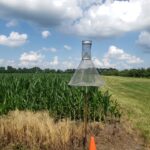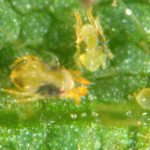The time has arrived to start implementing our scouting programs for monitoring and early detection, an integral part of your integrated pest management plan. In high tunnels or other protected environments there are a variety of insect pests that are capable of overwintering and can move into an of the early-season crops that you are[Read More…]
To regular readers of the Vegetable Crop Hotline, it may seem that we include an article about tomato spotted wilt virus every year out of custom. However, we have again observed large outbreaks of this disease. Please read the article below carefully if you raise tomato transplants or mature tomatoes in a greenhouse or high[Read More…]
This time of year you are likely getting bogged down in the fight against pests. The accumulation of plant pathogens, insects, and climatic conditions favoring their growth can make the last few weeks of harvest feel like the toughest point in the battle. For cucurbit growers in particular, there are a number of insect pests[Read More…]
Tomato spotted wilt virus (TSWV) is a plant disease caused by a virus that infects more than 1,000 species of plants, including ornamentals and vegetables. Visual symptoms of TSWV vary depending on the plant that is infected, but general characteristics include yellow or brown ringspots on fruit and small, dark-colored ringspots on foliage that may[Read More…]
In the past two weeks we have heard reports of the Squash vine borer (Figure 1) being spotted in some local gardens. This pest of cucurbit crops tends to be sporadic in our region; you are either battling it every year or it hardly makes an appearance. The squash vine borer is a member of[Read More…]
After weeks of successive trap catches in the double digits, our recent catches have gone down. Be sure to check the CEW trapping website for updates daily. At this point in the season, when field corn is in the silking stage, the threat to sweet corn, and potentially hemp, goes down. The current action threshold[Read More…]
While we might be struggling with the heat and lack of rain, there is one pest that is loving it, Mites! Now is the time to be on your toes watching out for this pest. Early detection and treatment are key. In protected environments prevention and early intervention are especially important; In the field, heavy[Read More…]
The Purdue Extension Entomology Vegetable Team has a new website available for you to stay in touch and access resources for pest management in your vegetables, wherever and however you grow them! It is also the place to stay updated with the CEW trapping for 2020 by following the page to this location. Check it[Read More…]

